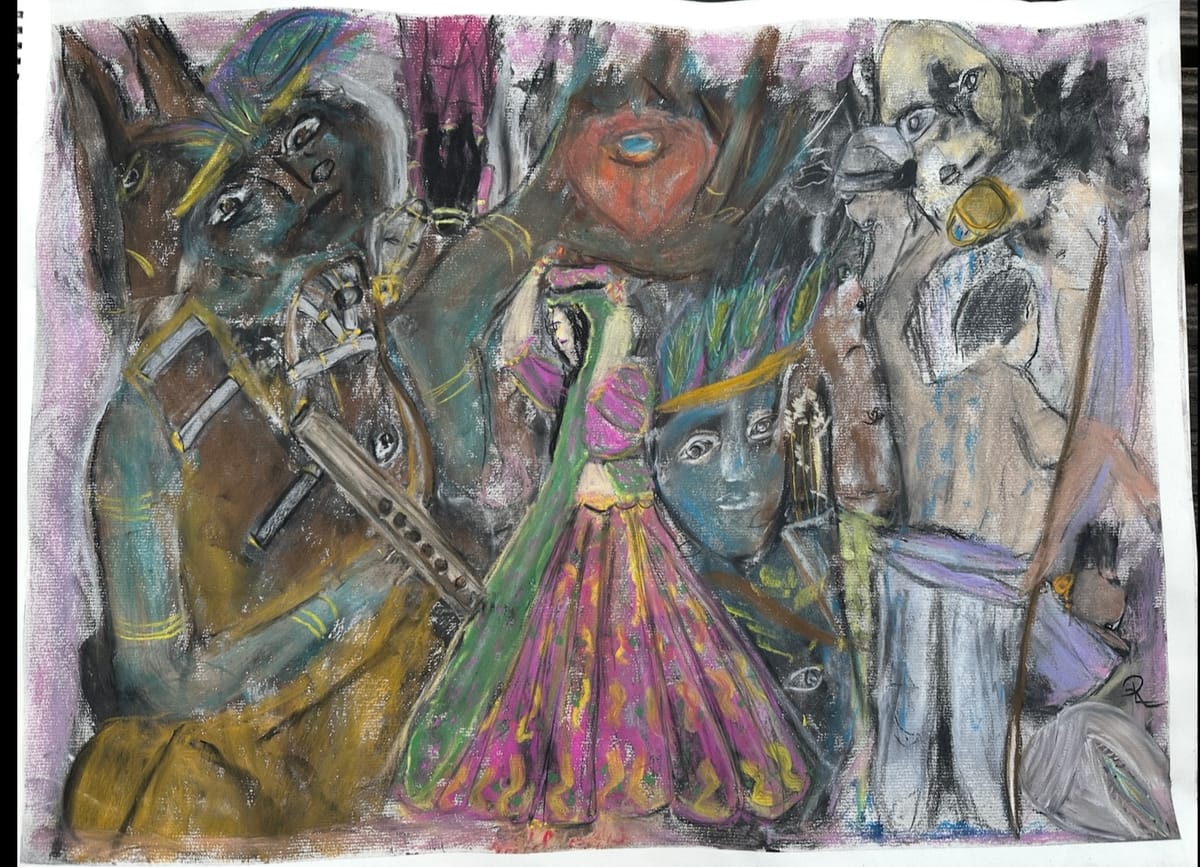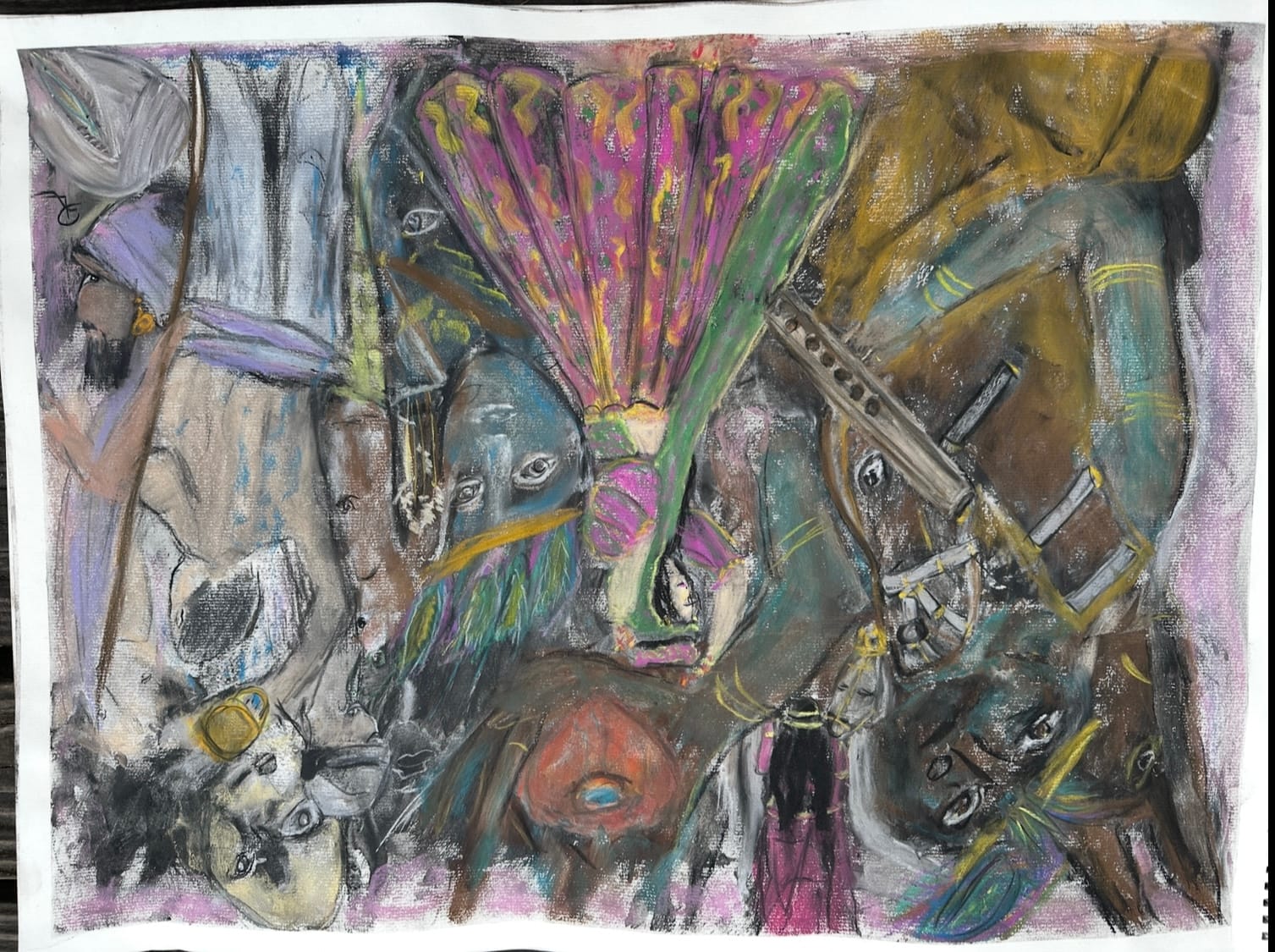Where the Burden Meets the Flute

This piece is a sacred unveiling. Two directions. Two worlds. And one timeless moment where divinity meets the ordinary—where burden is noticed, lifted, and transmuted.
In the first perspective, Krishna emerges on the left, unmistakable in his essence. His peacock crown, the tender posture, and his flute—ready to play not a song of celebration, but of compassion. At the center, a woman bears the weight of a clay vessel—heavy with water, heavy with life, heavy with years of unseen labor. Yet from the swirl of celestial motion, Krishna’s hand rises to meet hers—not to take, but to ease. This is a moment of Bhakti, of love responding to devotion without words.
And to the right, a stark contrast. A priestly figure, adorned and absorbed in ritual, pours water from a golden vessel. It’s not malice, but detachment—an echo of how sacredness is sometimes lost in performance. While one being lifts, the other pours away.

From another angle, the conch reveals itself clearly. Spiraled. Eternal. It was not forced—it was surrendered into being. And beside it, the woman appears again, cradled in royal pink, now with a gentle horse nuzzling her shoulder. A protector? A soul companion? Maybe the same Krishna, taking another form.
The background, rich with veils and hidden eyes, speaks of witnesses. Of soul memories. Of those who walked long paths alone, only to be surprised by love at the bend in the road.
Even the traveler with the staff—possibly dangerous, possibly divine—asks: who is worthy of trust, and who simply appears in sacred stories to test us?
This painting is not static. It breathes. It rotates. It reveals in stages.
For those who have carried too much, for too long—
For those who’ve wondered if anyone sees the weight—
This piece answers: Yes. You were seen. And help is already reaching for you.
Krishna walks with the water-bearer.
And the conch has sounded.
